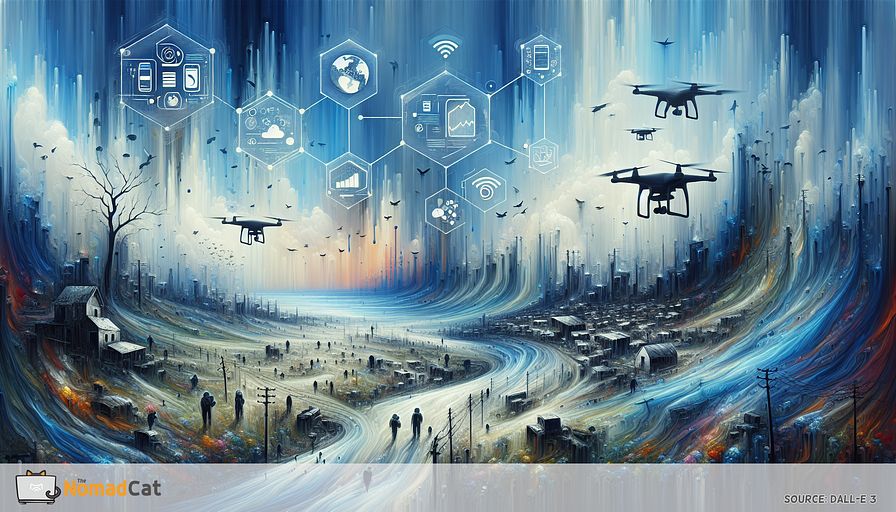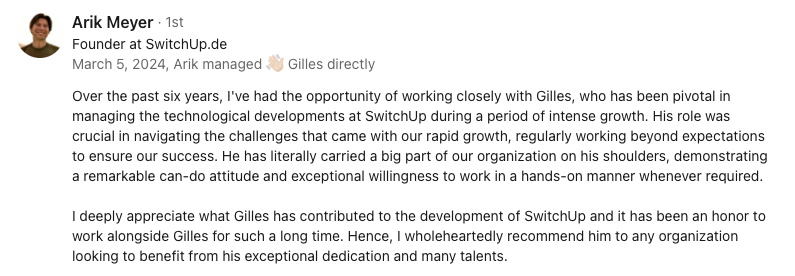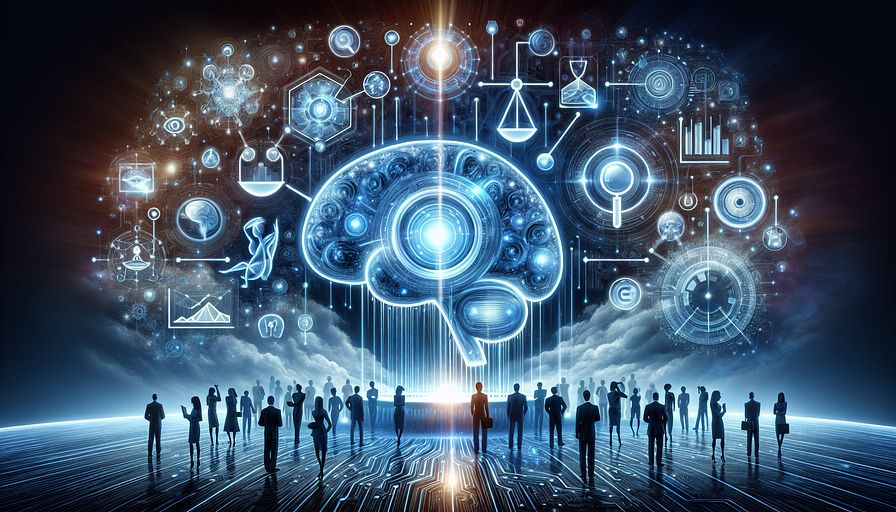Tech-Powered Relief in Emergencies
Abstract:
The role of technology in enhancing disaster relief efforts is becoming increasingly significant. Innovations in this field not only streamline the delivery of aid but also ensure that it reaches the most vulnerable communities efficiently. From mobile applications that provide real-time information to drones that map affected areas, the breadth of technology being utilized is vast. Moreover, data analytics plays a crucial role in predicting and mitigating future disasters, thereby saving lives and reducing economic losses. This discussion explores various technological advancements and their impact on improving disaster response mechanisms. With a focus on real-world applications, it highlights how tech solutions are being implemented by aid organizations to facilitate quicker and more effective relief operations. The aim is to shed light on the potential of technology to transform emergency response strategies, making them more responsive and adaptable to the needs of affected populations.
Introduction to tech in disaster relief
Imagine the power of technology harnessed for saving lives and providing critical aid when disaster strikes. The integration of innovative tech solutions has significantly enhanced disaster relief efforts, transforming the way aid organizations respond to emergencies. Advanced tools are now streamlining aid delivery, ensuring timely and efficient assistance reaches vulnerable communities. From mobile applications offering real-time updates to drones conducting rapid assessments, technology has become an indispensable ally in emergency response. This article explores various technological advancements that are making a remarkable difference in disaster relief, providing a comprehensive understanding of how these tools are revolutionizing humanitarian efforts. Stay with us as we unveil the profound impact of technology on improving crisis management and response strategies.
Real-time information through mobile applications
In moments of crisis, mobile applications have emerged as powerful tools to relay real-time information, ensuring that everyone involved in disaster relief is on the same page. Imagine you're in a disaster zone—apps like Find My Family can help locate missing relatives, providing a critical lifeline in chaotic situations. Applications such as Volunteer Connect streamline the coordination of volunteers, allowing aid workers to focus on delivering essential services. These platforms connect helpers with those in need more efficiently than ever before.
One standout example is the SAFETAG app, which enables rapid communication between aid workers and affected individuals. This app offers multilingual support and can share notifications about food distribution points, medical aid stations, and safe evacuation routes. Moreover, the Disaster Alert app provides up-to-date information on various hazardous events worldwide, ensuring that people are well-informed and can make safer decisions.
The ability to communicate instantaneously and access real-time data is not just convenient; it's life-saving. Mobile applications have become an invaluable asset in emergency response, transforming how aid is delivered, received, and coordinated. They ensure that critical information reaches the right people at the right time, making them integral to modern disaster relief efforts.
drones in mapping and assessment
Drones, often dubbed as modern-day eyes in the sky, are revolutionizing the way disaster relief operations are conducted. These aerial devices are being utilized to map and assess affected areas swiftly and accurately, making them invaluable during emergencies. Imagine the immediate aftermath of a natural disaster—traditional methods can take hours, even days, to gather detailed information about the extent of the damage. Drones, on the other hand, offer a more efficient and rapid solution.
The advantages of using drones are numerous:
- Speed: Drones can cover vast areas in a fraction of the time required by ground teams. This allows for critical early assessments to be made quickly.
- Efficiency: High-resolution images and live video feeds provide real-time data, aiding in precise decision-making and resource allocation.
- Safety: Drones can access dangerous or hard-to-reach areas without putting human lives at risk.
Experts have frequently highlighted the transformative power of drones in disaster scenarios. For instance, during the recent floods in Southeast Asia, drones were deployed to map inundated regions, providing aid organizations with essential data within hours. A disaster response coordinator from the International Red Cross noted, “Drones have significantly cut down our response time, allowing us to allocate resources more effectively.”
Ultimately, the ability to quickly map and assess disaster-stricken areas ensures that help can be directed where it is needed most, saving lives and improving the effectiveness of relief efforts. As technology continues to evolve, the role of drones in emergency response will only become more prominent.
Data analytics in predicting and mitigating disasters
The power of data analytics is transforming our ability to predict and alleviate the impacts of natural disasters. By harnessing the capabilities of big data and machine learning, we can now understand patterns and trends that were previously hidden, allowing for more effective disaster preparation and response.
At the core of this transformation is predictive modeling. Imagine having a tool that leverages historical data, weather patterns, and seismic activity to forecast the likelihood of future disasters. This technology can predict the path of hurricanes, estimate the extent of flooding, or anticipate earthquake aftershocks. Such insights play a crucial role in preemptive measures, potentially saving lives and reducing economic losses.
Big data analytics consolidates vast amounts of information from diverse sources, including satellite imagery, sensor data, and social media posts. When combined, this information offers a comprehensive view of ongoing and potential threats. Machine learning algorithms further enhance this by continuously learning from new data, refining predictions, and improving accuracy over time.
Here are some ways data analytics is being utilized:
- Early warning systems: Predictive analytics can trigger early warning systems, giving communities more time to evacuate and prepare.
- Resource allocation: Analysis of data helps in optimizing the deployment of emergency resources to areas where they are most needed.
- Risk assessment: Data-driven models provide detailed risk assessments, guiding infrastructure development and urban planning to minimize future damage.
By continuing to invest in and develop these data-driven approaches, we stand a better chance of mitigating the devastating effects of natural disasters. The combination of technology and human ingenuity is proving to be a powerful ally in safeguarding communities worldwide.
Real-world applications by aid organizations
Aid organizations are increasingly turning to technology to make their relief operations quicker and more effective. One prominent example is the collaboration between the World Food Programme (WFP) and tech companies to provide real-time data on food distribution through the Building Blocks blockchain initiative. This project ensures transparency and accountability, reducing fraud and ensuring that food reaches those in need.
The International Federation of Red Cross and Red Crescent Societies (IFRC) has partnered with Google to develop tools like Google Person Finder, which helps reconnect families separated during disasters. Such partnerships leverage the strengths of both humanitarian organizations and tech giants to enhance disaster response capabilities.
Funding is crucial for these technological advancements. The United Nations Office for the Coordination of Humanitarian Affairs (OCHA) has set up the Humanitarian Data Exchange (HDX) platform, which consolidates data from multiple sources to help humanitarian workers make informed decisions. By investing in cutting-edge technology, OCHA can better plan and coordinate relief efforts.
Success stories abound. During the 2015 Nepal earthquake, drones were deployed by various NGOs to map affected areas, providing vital information that expedited relief operations. Similarly, after Hurricane Maria, local and international aid organizations used mobile apps to share information about water and food distribution points, significantly improving the efficiency of aid delivery.
These initiatives showcase the immense potential of technology in transforming emergency response. By embracing tech solutions, aid organizations are better equipped to meet the challenges posed by disasters, ultimately saving more lives and improving the efficiency of relief operations.
challenges and limitations of tech in disaster relief
While technology has revolutionized disaster relief, it also comes with its set of challenges and limitations. One major issue is technological accessibility. In many disaster-prone areas, the essential infrastructure needed to support advanced tech tools—like reliable electricity and internet connectivity—may not be available. This can hinder the deployment and effectiveness of these innovations.
Cost is another significant barrier. High-tech solutions often require substantial financial investment, which can be a limiting factor for cash-strapped aid organizations. Additionally, these technologies frequently necessitate specialized skills for operation and maintenance. Many humanitarian workers may not have the technical expertise required, leading to a need for extensive training, which further adds to the cost.
Cultural barriers can also affect the adoption of these technologies. Different communities have varied levels of trust and familiarity with modern tech tools, and getting widespread buy-in can be challenging. Language differences and uncomfortable social dynamics may impact the usability and acceptance of specific applications or tools.
Finally, even the most advanced technology is not foolproof. Tools like predictive analytics and drones rely on data, which might not always be accurate or up-to-date. Dependence on tech can potentially lead to a false sense of security, causing delays in more traditional but effective response methods.
In conclusion, while technology in disaster relief offers remarkable benefits, addressing these challenges is crucial for ensuring its successful implementation and maximizing its positive impact.
future prospects of technology in emergency response
Looking ahead, the future of technology in emergency response is teeming with exciting possibilities. Emerging advancements and innovations are set to further enhance the efficiency and effectiveness of disaster relief efforts, making them more responsive and adaptable to the ever-changing challenges.
One of the most promising prospects lies in the development of Artificial Intelligence (AI) and Machine Learning (ML) algorithms. These technologies have the potential to revolutionize predictive analytics, offering even more precise forecasts and real-time updates. Imagine AI systems capable of instantly analyzing vast data sets from various sources, including social media, satellite imagery, and IoT sensors, to provide timely and accurate information on disaster situations.
In addition to AI and ML, research is underway to leverage blockchain technology for enhancing transparency and accountability in disaster relief operations. Blockchain can ensure that resources and funds are tracked meticulously, reducing the risk of fraud and ensuring that aid reaches those who need it most.
emerging technologies and innovations
Several other cutting-edge technologies are set to make a significant impact:
- 5G networks: The widespread adoption of 5G will provide faster, more reliable internet connections, allowing for seamless communication and data exchange in real-time.
- Augmented Reality (AR) and Virtual Reality (VR): These technologies can offer immersive training for aid workers, simulating disaster scenarios and improving preparedness.
- Robotics: Advanced robots equipped with AI can assist in search and rescue missions, accessing areas that are dangerous or inaccessible to humans.
Furthermore, ongoing research focuses on sustainable energy solutions, such as solar-powered charging stations and portable wind turbines, to ensure that technology remains operational even in power-deprived disaster zones.
The tools and technologies on the horizon hold the promise of enhancing our ability to respond to emergencies more swiftly and efficiently. By continuing to invest in and integrate these innovations, disaster response strategies will become increasingly robust, ultimately better safeguarding vulnerable communities worldwide.
transforming emergency response strategies
Harnessing technology in emergency response strategies underscores the profound impact it can have on disaster relief efforts. Mobile applications provide real-time data, enhancing communication and coordination among responders. Drones offer swift assessment of disaster zones, enabling quick and precise resource allocation. Data analytics empower us to predict and mitigate disasters more effectively, using vast datasets to forecast future events and inform preemptive actions.
Real-world applications by aid organizations, such as the WFP's blockchain initiatives and Google's Person Finder, show the practical benefits of tech-based solutions in crisis scenarios. However, it's crucial to acknowledge the challenges and limitations, including infrastructure constraints, high costs, and cultural barriers, which need addressing to maximize technology's potential.
Looking forward, innovations like AI, blockchain, 5G, AR, VR, and robotics hold immense promise for further enhancing disaster response. By continuously investing in these emerging technologies, we can develop more responsive and efficient strategies, ultimately saving lives and improving the overall effectiveness of humanitarian aid.
You might be interested by these articles:
- Leveraging Tech in Crisis Recovery
- Tech Innovations Boosting Disaster Aid
- Enhancing Disaster Resilience for Vulnerable European Communities





